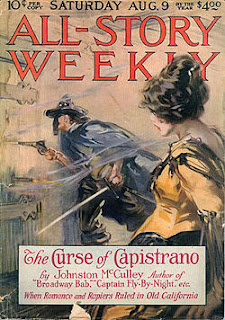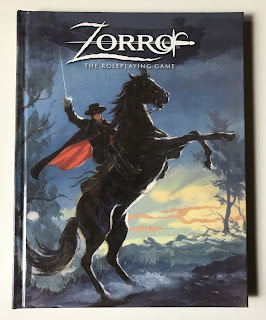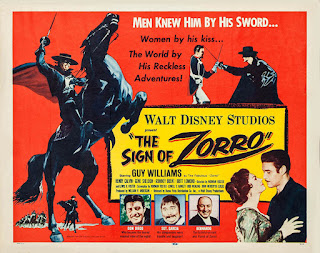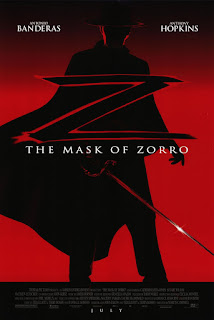For the purposes of any Theoretical Swashbuckling review, I generally approach any adaptation as a unique work unto itself, more or less. This is true whether it's a movie adapted from a novel or, in the case of The Adventures of Sir Lancelot, a television show adapted from multiple poems that were adaptations of still older poems that were adaptations of legends that were based on early medieval history. There have been many versions of Sir Lancelot from a variety of sources, so, instead of trying to match this one (or indeed any other aspect of Arthurian legendry) with any preceding it, I'll take it at face value, anachronisms be damned.
Consisting of 30 episodes that originally aired in 1956-1957, first in black & white and then in color, the adventures begin with Lancelot's arrival in Camelot where he seeks a place at King Arthur's Round Table. The famous affair with Queen Guinevere is never more than hinted at with the briefest of exchanged glances in the early episodes because the emphasis is on chivalry, justice, and (naturally) adventure. One can reliably expect to see horses, swordplay, a bit of humor, and a moral.
Apart from the obvious and inevitable departures from historical and literary accuracy (neither of which were ever in agreement anyway), the most frustrating liberty taken by the show was the utter de-magicking of Merlin. Perhaps it was a purely practical decision. After all, it would cost far less to depict him doing stage magic and astronomy (and sending messages via carrier pigeon) than to depict him working wizardry of the supernatural sort. Besides, it allows for Sir Lancelot to be the smart knight who is in the know about Merlin's supposed sorcery. Perhaps it was a requirement by certain censors that the show demonstrate educational value, which would preclude spell-flinging in favor of the implementation of the discoveries of Archimedes or the prediction of eclipses. Regardless of the reason behind making Merlin a natural philosopher with a fondness for magic tricks instead of the wisest and mightiest wizard in the world, I find any excuse weak when the knights speak of actually fighting dragons (as they do in a later episode).
The budget for The Adventures of Sir Lancelot was probably modest as may be surmised by the re-use of sets for different locales, the re-use of actors for different characters (e.g. Derren Nesbitt played 14 different characters in as many episodes), and a castle gate that required mounted knights to duck their heads when passing through it. The combat scenes are neither elaborate nor convincing, which serves the dual purpose of being inexpensive and inoffensive. There are never more than a few villagers or knights or bandits or monks on the screen at one time, and the aforementioned dragons are never more than alluded to in conversation.
To be clear, The Adventures of Sir Lancelot is not a romantic epic; it is an episodic adventure series with nominal educational value primarily aimed (I assume) at schoolchildren. It is not without its charms for an older audience, but for those with a taste for more than mere nostalgia, I would hold up one episode in particular for appreciation: "The Thieves." In this episode, first Sir Lancelot and then King Arthur are confronted with the question of, to put it simply, criminal reform. In order to investigate the truth of the allegation that current methods make it impossible for a former criminal to take up an honest life, King Arthur and Sir Lancelot disguise themselves as commoners and see, for the first time, how the underprivileged survive. This is also the one and only time that King Arthur is depicted not solely in his capacity as a ruler, but as a human being. It is a poignant story well acted, and if more of the episodes were like this one, The Adventures of Sir Lancelot would have had an enviable and long-lasting reputation as a television classic of rare quality.
Writing: FairDirecting: Fair
Acting: Good
Cinematography: Fair
Stunts: Fair
Swordplay: Mediocre
Panache: Good
Overall Rating: Fair
Swashbuckling Rank: Fair
Written by: various
Directed by: various
Performed by: William Russell, Cyril Smith, Robert Leigh-Hunt, Robert Scroggins, David Morrell, Derren Nesbitt, Jane Hylton, et al.












